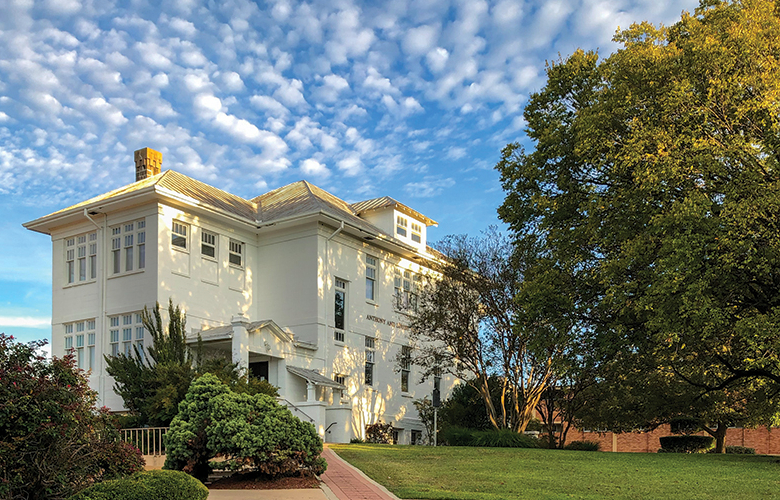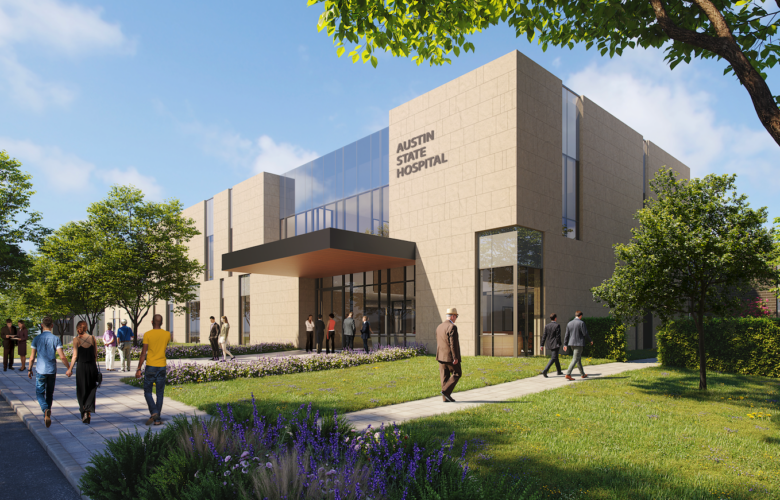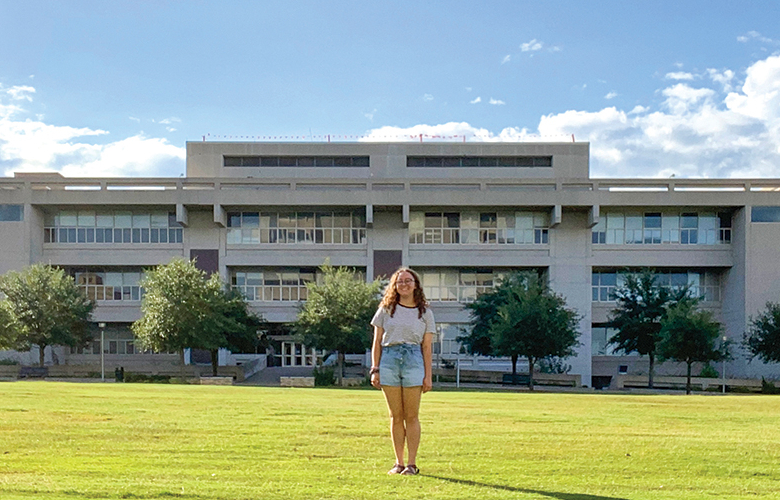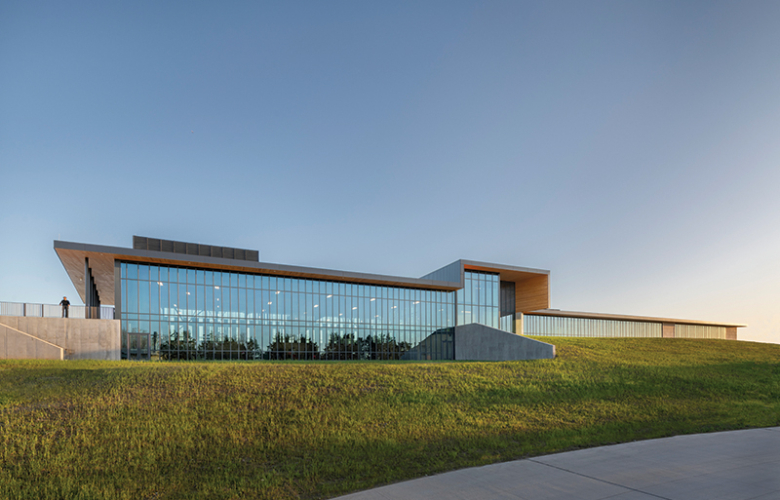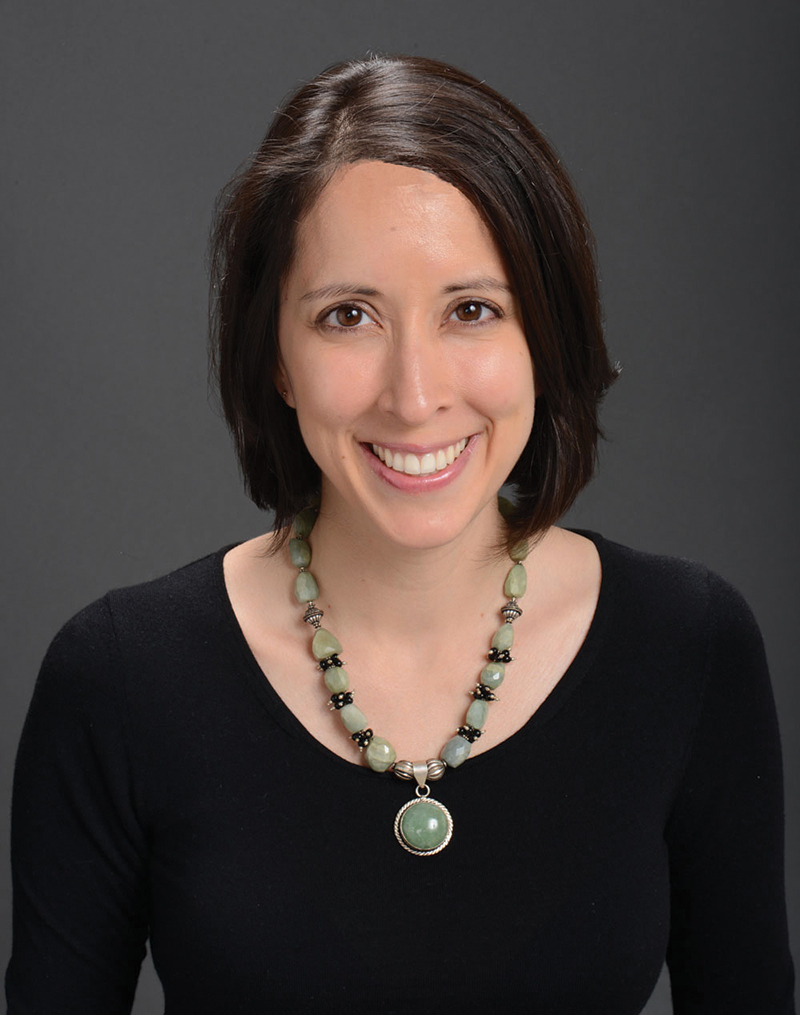Q&A with Sara Bronin, AIA
In June of this year, Sara Bronin, AIA, was nominated to chair the United States Advisory Council on Historic Preservation. Bronin graduated with an architecture degree from The University of Texas at Austin and, after attending Oxford on a Rhodes Scholarship, earned a law degree from Yale University. Bronin currently teaches in both the college of architecture and the law school at Cornell. Texas Architect Interim Editor Brantley Hightower, AIA, recently spoke with Bronin about her interdisciplinary research on how law and policy can create more equitable, sustainable, and well-designed places. The following transcript has been edited for clarity and length.
Brantley Hightower, AIA: In the interest of full disclosure, I should start by mentioning that we do know each other. We both studied architecture at UT around the same time. After studying architecture in Austin, how was it you ended up pursuing a career in law?
Sara Bronin, AIA: When we were in architecture school, we learned about the way buildings should be designed and assembled, and we all took Keith Shuley’s Professional Practice course, which gave us insights into contracts and professional liability issues. But we didn’t really learn as much about the external constraints on construction, including zoning codes, building codes, and subdivision regulations. Classes on those topics are absent from core curricula in architecture schools around the country, so this isn’t a deficiency on UT’s part. As we advanced in our studios, I became curious as to how law influenced the way we build and design our communities. So I knew even before the last year of architecture school that I wanted to go to law school.
That said, I didn’t go straight to law school. I first had a chance to go to Oxford, where I enrolled as a master’s student for two years and earned a degree in history, writing a thesis there on Washington D.C.’s residential historic districts.
BH: You’re in the unique position of having taken both the ARE and the bar exam. Most of our readers are familiar with the former but not the latter: How do the two licensing processes compare?
SB: The architectural licensing process is much more challenging than the law licensing process. To become a lawyer, you take a one-time test shortly after you finish law school, and there are no apprenticeship requirements. Architects, by contrast, must take a multidisciplinary series of exams and work under the supervision of a licensed architect for what amounts to three years of full-time work. The requirements before you even get to take the ARE, on top of the intensity of the study for the ARE itself, are much more than what is required of lawyers.
BH: You now have students in both these fields at Cornell. What course are you teaching this semester?
SB: I’m teaching a seminar on historic preservation law. The course covers how the law both constrains and enhances our ability to protect historic places. We start off with the legal standards for designating historic structures and then discuss federal laws, including Section 106, which requires federal agencies to review how their projects impact historic properties. We also touch on local regulations, which is the way that most people interact with historic preservation laws. We talk specifically about the subjectivity of local rules and the need for those rules to evolve in the face of new challenges to the field, including climate change.
The course is cross-listed, which means that students come from law and planning as well as public policy and the college of arts and sciences. The most enjoyable part of class comes when the folks with architecture and planning training help explain some of the design principles at play and the law students help explain what the law requires of property owners and government.
BH: At Cornell and elsewhere, you’ve done research on the intersection of architecture and law and the impact of land use restrictions. Tell me more about that.
SB: Zoning controls almost everything that is built in this country — with the possible exception of my hometown of Houston, which lacks a formal zoning code. Yet the average person does not have a good understanding of how specific zoning provisions impact the way that our cities come together. My research has shown that zoning codes have a significant negative effect on our ability to design for sustainable and equitable cities. One recent project involved mapping and analyzing the zoning codes in Connecticut. We found that 80% of residential land in the state has a one-acre minimum lot size. That requirement has exclusionary impacts and is detrimental to the environment because it forces us to depend on cars. We also found that zoning codes permitted multifamily housing to only be built on 2 percent of land in the state. What that all means is that people who cannot afford large lot single-family homes cannot afford to live in Connecticut.
BH: Do you think growing up in Houston somehow influenced your interest in the subject of zoning?
SB: Definitely. In Houston, you see refineries next to residences, next to auto repair shops, next to grocery stores. Even as a child, I could see this didn’t make sense. Later in life, I started to think that maybe if Houston had zoning, it would have developed in a more orderly way. Certainly, zoning that prevented chemical plants from being located next to residents would have improved many Houstonians’ health and well-being. But as the Connecticut research shows, bad zoning can create more problems than it solves. I’ve spent my entire career trying to figure out ways that zoning — and other laws, for that matter — can help people shape their own communities for the better. And you could say that all started in Houston.
BH: In addition to researching the effects of zoning, you’ve also worked to move zoning in the right direction. Tell me about your efforts with Desegregate Connecticut’s statewide zoning reforms.
SB: In May of 2020, I was just as devastated as the rest of the country in seeing the visible manifestation of racism in the murder of George Floyd. I decided to see if my fellow members of the AIA, the Bar Association, and the Connecticut Chapter of the American Planning Association, among others, wanted to talk about the role of land use laws in enshrining systemic racism. Two hundred and thirty people joined a call a few weeks later, and together we determined that we needed to change land use laws to make them more equitable. That’s how Desegregate Connecticut was formed. We were fortunate to build a coalition of now 78 nonprofit organizations, and to attract a multidisciplinary team of many talented people helping with research and advocacy efforts.
This past June, a year and a day after that first phone call, we passed the first major changes to Connecticut’s Zoning Enabling Act in over 30 years. That was good progress. But I’m most proud of the fact that we got so many people talking about zoning through our research, writing, public events, and engagement. We’ve seen ripple effects at the local level and better decisions being made. We know that there’s a lot more work to do. As we move forward with our next round of changes, I’m optimistic that architects will play a larger role in actually changing and shaping codes.
BH: You’ve also been active in the historic preservation scene in Connecticut. Have you found preservation in New England to be different from what you experienced growing up in Texas?
SB: Moving to the Northeast from Texas was an eye-opening experience in a number of ways, but one of the things that surprised me is how much more people care about and engage with historic places. There are historic sites and historical societies in even the smallest of towns.
My experience living in Hartford shows how many ways people who care about historic places can get involved. I served on the Hartford Historic Preservation Commission for a few years, then on the board of Preservation Connecticut, a statewide nonprofit. I later became chair of Preservation Connecticut. The preservation community in Connecticut and New England broadly understands that the field is evolving. We have to think of ourselves as stewards not just of the past, but also of the future.
BH: And then over the summer you were nominated by President Biden to be the chair of the Advisory Council on Historic Preservation. Tell me more about the role of that agency.
SB: The Advisory Council is the federal agency that advises the President and Congress on federal historic preservation policy. It tries to ensure that federal actors incorporate historic places into decision making, and that they see historic places as an asset that can help us meet national goals on affordable housing, energy conservation, and economic development. On rare occasions, the Advisory Council will provide comments on pending legislation.
The Advisory Council also administers the Section 106 process, which ensures that other federal agencies take historic resources into account when developing projects or conducting certain activities. It works collaboratively with agency heads, tribal governments, state and local politicians, and private parties to ensure that any adverse effects on historic properties are mitigated.
BH: As I understand it, before you can officially become the chair, you need to be confirmed by the United States Senate. Do you feel surviving final design reviews in architecture school prepared you for your Senate confirmation hearing?
SB: Certainly! Design reviews in architecture school prepare you for presentations of any kind. We were taught to think of even the toughest question or the most withering criticism as a chance to learn. I’ve viewed the Senate confirmation hearing the same way.
Also from this issue
